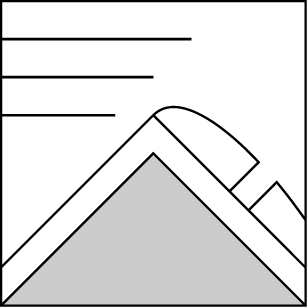Basic Information
Observation Details
Observation Date:
March 29, 2023Submitted:
March 29, 2023Observer:
SAC - DavisZone or Region:
Galena Summit and Eastern MtnsLocation:
Galena Summit (S-E-N, 8,000'-9,100')Signs of Unstable Snow
Recent Avalanches?
None ObservedCracking?
IsolatedCollapsing?
IsolatedSnow Stability
Stability Rating:
FairConfidence in Rating:
ModerateStability Trend:
SteadyBottom Line
The slab growing near the surface is now 8-12" thick in this area. On slopes sheltered from the wind and where devoid of crusts, it lacks the harness to propagate a fracture. Sunnier slopes with crusts and facets are the most concerning and will become a problem as the slab grows. This setup is likely already spicy in areas with any wind-load.
Advanced Information
Weather Summary
Cloud Cover:
OvercastTemperature:
mid-20s FWind:
Light , SENew/Recent Snowfall:
HST = 15-20 cm since (3/23)Large, heavy, wet snowflakes were stacking up fast in Ketchum this morning. This type of snowfall persisted until about the SNRA HQ. It was snowing S-1 to S1 most of the day. Wind was filling in skin tracks quickly on exposed ridges. I could hear stronger wind in the higher peaks but did not experience much more than some moderate gusts. There is plenty of SAFT on all aspects. Snowfall was much lighter or had ceased on parts of the drive back to the WRV.
Avalanche Observations
No new avalanches. No visibility except in the immediate terrain around my tour. The cloud deck was high enough that I would have noticed any new wet avalanches in the WRV on my drive home.
Snowpack Observations
I set out to get an update on the growing slab above 3/19 and 3/23. In this area, it ranges from 18 cm (sunny) to 28 cm (shaded). It is not stiff enough to pose a problem except in areas that have seen wind affect. The slopes with crusts and facets were much more concerning looking than shaded slopes where the facets were less developed.
S @ 8,000' | Open glade: 16 cm above a stout 3-4 cm crust (3/23) with facets beneath.
W @ 8,100' | Clearing in old growth | HS = 185 cm: ECTP2 dwn 20 cm on facets between two 3 cm crusts (assuming 3/23 and 3/19). ECTX below that. (2/18) was down 87 cm. There was an abrupt hardness change from P- at the base of the slab to 4F in the facets below. The structure was ugly.
NE @ 8,200' | Clearing in old growth | HS = 205 cm: ECTX. Right-side-up. The (3/19) layer was hard to see with the naked eye but easy to locate as a harness difference (4F- to 1F). The "slab" is 27 cm thick and grades from F to 4F- at the base, resting on 1 mm facets. (2/18) was not tested. It was down 115 cm. The base of the slab was 1F+, facets below were 4F+ but looked better than in the shallower W pit.
Avalanche Problems
| Problem | Location | Distribution | Sensitivity | Size | Comments |
|---|---|---|---|---|---|
 Wind Slab
Wind Slab
|
|
Comments: While not a problem in the terrain I traveled there were obvious clues that it was a problem in more exposed terrain. I observed 2-3 foot wind whales and experienced cracking and collapsing in pillows. Ski cuts released a few pockets of 10-12" thick small slabs. Some of the cracks shot out 40' to release small drifts. There was obvious wind affect as low as 8,500' on exposed ridges from the moderate to strong SE wind of the past 36 hrs. |
|||
 Persistent Slab
Persistent Slab
|
|
Layer Depth/Date: 85-115 cm Weak Layer(s): Feb 18, 2023 (FCsf) |
There was no upper pack persistent slab problem here in areas that were sheltered from the wind.
Terrain Use
I avoided avalanche terrain aside from short, steep pitches.
